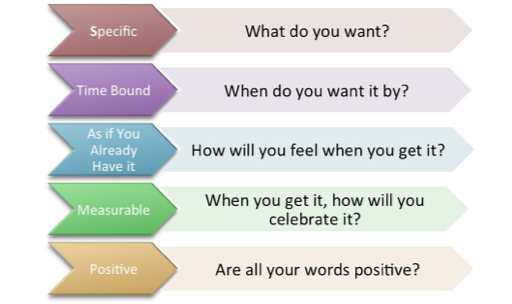As we open a new year and a new decade, the stage is set for change. What improvements would you like to see in your office? An associate? A bigger space? A team that is engaged and positive? An influx of new patients?
The only limit you have is your imagination. But how do you achieve these goals? How do you get your team on board with your vision? Where do you find time and money to achieve new dreams when you are already stretched thin as a clinician, small business owner, spouse, and/or parent?
The key is to understand the difference between your vision and your mission. And if you don’t have both written down and posted where the world can see them, you have neither.
What is the difference between a vision and a mission?
It can be confusing to understand the difference between all the components of change when so many definitions are thrown around. Setting goals requires innovation. Innovation has many moving parts. It starts with an image in your mind: an outcome you’d like to hold as true. That is the vision. It’s future based, big, new, and a little scary.
The mission is how you plan to get there. It is the day to day little goals that add up to change over time. It’s practical. It’s the how to the what.
“The vision statement focuses on tomorrow and what the organization wants to become. The mission statement focuses on today and what the organization does. While companies commonly use mission and vision statements interchangeably, it’s important to have both. One doesn’t work without the other, because having purpose and meaning are critical for any business (Skrabanek, 2019).”
Let’s take a look at an example:
Company: Toyota USA
Mission: To attract and attain customers with high-valued products and services and the most satisfying ownership experience in America.
Vision: To be the most successful and respected car company in America.
Notice that the mission is about what, who, and how; while the vision is the why.
Why do you want that vision?
Achieving your goals will not be fulfilling without also defining why you want them. Your vision is the purpose for which you exist, but the why is the meaning behind it. How do you believe you will feel when you achieve that big vision? Who will be helped? How will a day in your office be better?
Your why might be the same as a team, or it may be different. That is okay. Why will always include an emotion. Marketers have known this human phenomenon for decades and target the emotion over the product or service they are selling. People buy things based on how they believe they will feel when they have them. Your team will buy into the vision at a much greater rate if it is clear to them which emotion they believe they will feel. Take time to define it as an office and as individuals.
Why does writing your vision and mission increase success?

According to Mark Murphy at Forbes.com, there are two levels of brain science happening when you put pen to paper:
- External Storage
You are putting the details of your goal on an external source (piece of paper) and will have an easier time remembering it because it offers a visual cue.
- Encoding
When we write a goal, the perception or visualization of the outcome travels to our hippocampus and is analyzed. Decisions are made about what will be stored in our long-term memory, and what will be discarded. Writing it by hand improves that encoding process.
It’s been said, “If we can hold it in our mind, we can hold it in our hand.” Everything that has ever been created first started with a single thought, from a pen to Amazon. Writing it down helps you seal in the belief that you can attain it and hold yourself accountable for the actions necessary to have it. Then, the subconscious brain looks for ways that it can be, or already is, true for you.
When it comes to group goals, having it written and posted somewhere everyone can see it becomes even more important so that you are not working in silos with no clear goal, or even worse, different goals.
Goals-vs-Outcomes
People often confuse goals and outcomes. Goals are the actions you need to take toward a desired vision. Outcomes are the results you achieve because of the actions you take of the action.
In other words, a goal is not the end product, but the baby steps necessary to get there. Before you can create an action plan, you need to get really clear on what you want, and why. When times get tough (and they will), you need to remember, and repeat, your why.
When you have a decision to make, read your vision and mission, and see which choice is in alignment with them. Use them as goal posts for decision making.
Which goal-setting systems work best?

Writing SMART Goals
SMART goals are practical, tangible goals that are written and visible to everyone working toward them.
SMART goals are:
- Specific
- Measurable
- Attainable
- Realistic
- Time-bound
Companies have used them for decades to set and achieve goals, but they are lacking in the meaning and purpose that exist in your vision. They leave out the emotional component (or why) completely, so your vision must already be created, and strong, to keep your team motivated. Dental Hub 360 has an excellent article on how to write SMART goals to advance your dental career in 2020 and beyond.
STOP GENERATING LEADS, GET PATIENTS INSTEAD
Stop chasing unqualified leads and wasting your valuable chairtime. Learn how to fill your operatories with patients who are pre-qualified and serious about moving forward with your high-value treatment.
Creating an Office Manifesto
I’ve been a registered dental hygienist for 22 years, but I am also a certified life and business coach. I created a system for setting and achieving goals for myself in 2012, that I call “Manifesto Writing” and now teach it to others.
Merriam-Webster defines a manifesto as “a written statement declaring publicly the intentions, motives, or views of its issuer.” The Declaration of Independence is an example of a manifesto.
It is like your vision, mission statement, and annual SMART goals all wrapped up into a one-page, visible document. It’s a top-down method for starting with the why, and breaking down the how to the smallest micro-goals possible. In order for something to be a manifesto, it must be shared (public). Studies have shown it increases the likelihood of achieving a vision when it’s written.
I created my STAMP method to include positive psychology. It addresses the emotional component needed for change. The why takes center stage.
Before you can write your office manifesto, you need to define your vision and mission. Once you do, break it down into desired outcomes, or “Ideals.”
STAMP Means This:
- Specific
- Time-bound
- As if it’s already happened
- Measurable
- Positive

Here is an example of an office manifesto ideal. You may have multiple ideals as an office, or one per department, to make up your manifesto. It’s what you are shooting for and why. It’s the ideal outcome, written as if you already have it. Checking off all the smaller goals keeps your team engaged and focused on the vision.
Outcome (Ideal)
“Now that production has risen by 20% (S,M) by December 31, 2020 (T), we feel proud to donate $10,000 to our local children’s hospital, (A,P) and are excited to celebrate by going on a Smiles at Sea cruise.”
Goals (Action Plan/How):
- Hire a marketing company in alignment with our vision.
- Explore marketing companies that will drive high-value patients to our practice.
- Ask colleagues who they use.
- Look at reviews.
- Schedule a few strategy calls.
- Add talent to our existing team.
- Create ideal team member attributes:
- Cross-trained
- Positive attitude
- Willing to learn and grow
- Write a job description and post ads.
- Schedule working interviews.
- Get team feedback on their choice.
- Offer position with a 90-day trial period and incentives.
- Create ideal team member attributes:
- Improve case acceptance.
- Research articles and webinars online.
- Look into coaching and consulting companies.
- Find out our current treatment acceptance rate.
- Set a new goal:
- Write the new treatment presentation format/flow and beta test it.
- Meet as a team and make adjustments until you hit the goal.
Notice that this office broke down their goals into mini and micro action steps. Your written action plan can be as simple or complex as needed. Each action step helps this office stay on track, moving toward the ideal of 20% increased production with the why of a donation and cruise, along with the feelings of pride and excitement.
Post your manifesto, and discuss your goals at meetings and morning huddle. It should be “public” within the office team. Too often, I see practice owners who create goals but keep them to themselves. How is your staff supposed to be on the same page as you if you don’t share your vision?
To keep everyone motivated and engaged, look for small things to celebrate that cause the feelings written in your manifesto. If team members wanted to feel proud, ask them who or what they are proud of this week. If a few people said “fun” or “excited,” put up a selfie photo booth, or buy a bunch of balloons for no particular reason. That way, instead of waiting to feel it when you achieve the big vision, you are achieving the whole way because you’re already feeling what you desire. Action becomes easy when you’re feeling good and appreciated.
Know your team’s main motivators.
A common mistake practice owners make is assuming their teams want what they want. In the above example, the team may not care about production if you do not incentivize them, but thinking of the kids they will be helping will keep them motivated on a busy day. Imagining themselves lying at the pool on a cruise will, too.
Ask what would make them feel proud and/or excited (the emotions above). Help them set smaller personal goals. Check in often. See who is on track and who needs help.
Find out your team’s love language. According to research done by Dr. Gary Chapman, people are motivated by five different categories: physical touch, acts of service, words of affirmation, quality time, or gifts. Incentivize and reward based on how they most feel appreciated and loved.
How to Create Your 2020 Office Manifesto
To recap, here is how you can create an office manifesto for 2020, and every year that follows, to keep your team on the same page, engaged, and growing. Carve out a few hours every six to twelve months to see what goals you’ve reached and need to celebrate. Then, make a new manifesto!
- Define your office vision (what you want in the future, two to five years from now).
- Create your mission statement (the how to the what, actions you are currently taking).
- Write an office manifesto as a team (more specific, smaller goals created from your mission).
- Assign dates (timeline).
- Define the why (emotions).
- Write it as if you already have it (“Now that we are . . . , we feel . . .”).
- Make sure all your words are positive (you get what you focus on, so remove words like stress-free or debt-free).
- Include metrics (make sure it’s measurable so you know when you’ve achieved it).
- Plan the celebrations ahead of time and be sure to carry them out (burnout is caused by not celebrating your previous wins before setting new goals).
Citations
Murphy, Mark. “Neuroscience Explains Why You Need To Write Down Your Goals If You Actually Want To Achieve Them.” Forbes, Forbes Magazine, 15 Apr. 2018, www.forbes.com/sites/markmurphy/2018/04/15/neuroscience-explains-why-you-need-to-write-down-your-goals-if-you-actually-want-to-achieve-them/#3bce0bf47905.
Skrabanek, Britt. “Difference Between Vision and Mission Statements: 25 Examples.” ClearVoice, 29 Oct. 2019, www.clearvoice.com/blog/difference-between-mission-vision-statement-examples/.
